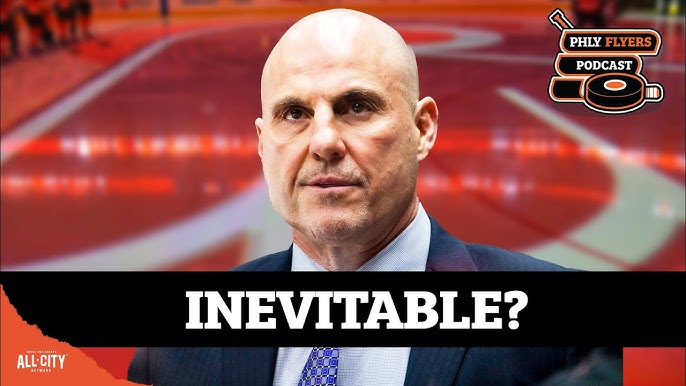Why Is Everyone Leaving WQAD News? Exploring the Trend

Have you heard about the recent buzz surrounding WQAD News? It raises a pressing question—why are several notable team members moving on? If you’re just as curious as we are, you’re in the right place. We’re diving into the recent happenings at WQAD News to understand this trend. We’ll unpack the individual departures and explore the broader context of change.
Some Famous Personalities Who Have Left WQAD News
Let’s start by introducing some familiar faces. David Bohlman, a well-regarded news anchor, recently took a six-week absence. Upon returning in February 2024, he spoke candidly about stepping back for mental health reasons. “We do a lot of stories about mental health on this show, and we are human too,” Bohlman shared. He affirmed his commitment to coming back “refreshed and ready to keep going.”
Next, there’s Joe McCoy, who pivoted his career to WQAD’s sister station in Minneapolis in July 2024. This move seems aligned more with professional development than dissatisfaction. McCoy seized an opportunity for career advancement, highlighting a personal choice to grow within the industry.
Finally, Denise Hynitka, known for her 6:30 broadcast, parted ways with WQAD in August 2023. Her reasons remain undisclosed, yet her departure adds to the narrative of change at WQAD News.
Why Are So Many Staff Members Leaving?
Addressing why many might be leaving WQAD requires looking beyond individual stories. While no evidence suggests an exodus, we might consider broader industry trends influencing these moves.
One aspect to consider is the “Great Resignation,” a term that gained popularity in describing widespread professional departures and job changes starting from 2021. Across various sectors, many individuals re-evaluated their job satisfaction and career paths amid the pandemic and chose to make significant changes.
Additionally, changes within the media industry itself, such as budget constraints and shifting viewer dynamics, could indirectly affect newsroom staffing decisions. Budget cuts have impacted government health tracking initiatives, a factor that may trickle down to newsrooms, challenging reporters covering health and related topics.
Yet, these issues aren’t exclusive to WQAD. Instead, they reflect an evolving landscape where journalists seek opportunities aligning better with personal and professional goals or address challenges like mental health.
The Impact on WQAD News’ Operations and Reputation
These departures inevitably influence WQAD News’ daily operations and public image. When familiar faces leave, especially well-liked ones, viewers notice. It can alter the station’s rapport with its audience, who often grow attached to the personalities delivering their news.
Operationally, filling roles previously held by seasoned professionals demands time and resources. New hires require onboarding, and it can take a while before they seamlessly integrate into the team, potentially affecting short-term productivity.
From a reputational standpoint, unexplained or frequent departures could raise eyebrows and lead people to speculate about workplace satisfaction or management decisions. Such perceptions might influence public trust, an essential currency in journalism.
Is This a Worrisome Situation for WQAD News?
Is this something WQAD should be concerned about? While turnover is part of any business, the reasons behind it dictate its severity. Individual departures for mental health, career opportunities, or undisclosed reasons don’t necessarily spell systemic issues. However, pattern recognition is key.
Ongoing turnover could signal potential underlying issues if not addressed. The key is ensuring open communication channels within the organization to support staff and understand their needs. Retaining talent often revolves around supportive workplace environments and clear professional growth paths.
Additionally, addressing mental health openly, as seen with Bohlman’s example, emphasizes organizational values and is a step toward nurturing a healthy workplace culture.
How Could This Affect WQAD’s Future?
Looking forward, WQAD must consider how these changes impact its strategic direction. Solving retention issues involves examining organizational culture, employment conditions, and career development opportunities.
The willingness to adapt also plays a crucial role. Newsrooms must evolve, reflecting societal and technological shifts. Embracing innovation in how news is delivered or tapping into new talent pools can breathe fresh energy into the organization.
Here’s a thought—imagine focusing on up-and-coming talent and diversifying the team’s skill set. Doing so not only aids continuity but also enriches the storytelling portfolio with fresh perspectives.
On a positive note, change can breed opportunity. With conscious efforts to understand and address current trends, WQAD can continue being a valued news source while supporting its team well-being.
Conclusion
As we piece together the puzzle of WQAD News’ recent exits, it becomes clear this isn’t about a singular issue. Rather, it’s a complex interplay of personal decisions, industry trends, and organizational dynamics.
Whether it’s addressing mental health needs, pursuing professional growth, or experiencing normal turnover, such changes are inevitable in any workplace. But with each challenge comes an opportunity to improve and grow.
For WQAD, the path forward is about understanding the reasons behind departures, supporting existing staff, and planning for a future that aligns organizational goals with employee well-being. By fostering a supportive and adaptive culture, WQAD can turn these shifts into stepping stones for continued resilience in the ever-evolving world of news.
Stay tuned to how developments unfold at WQAD and how they steer their future initiatives. Curious for more insights on managing business transitions? Check out this resource for a deeper understanding.
Also Read:



